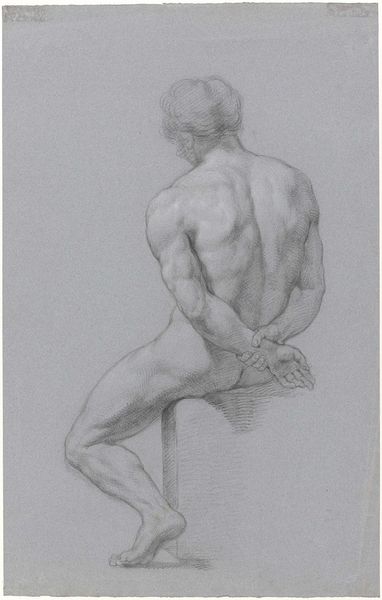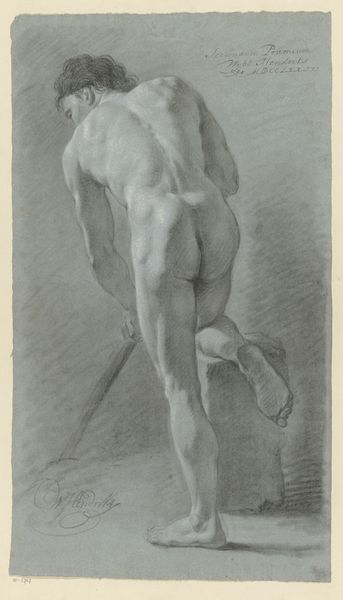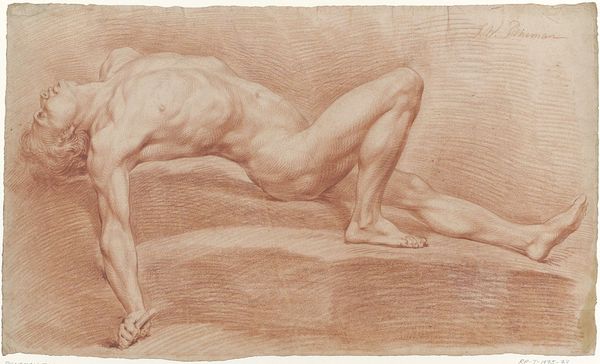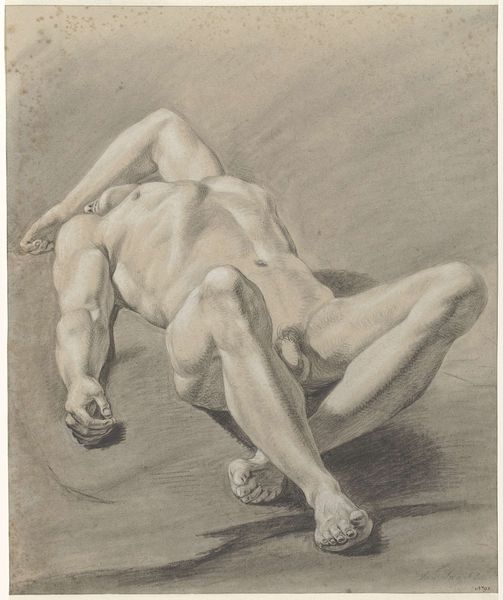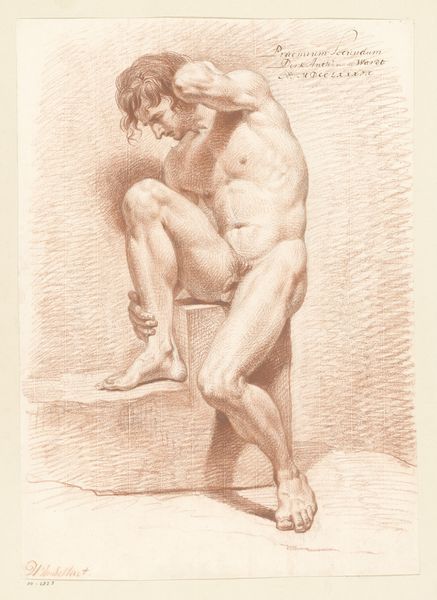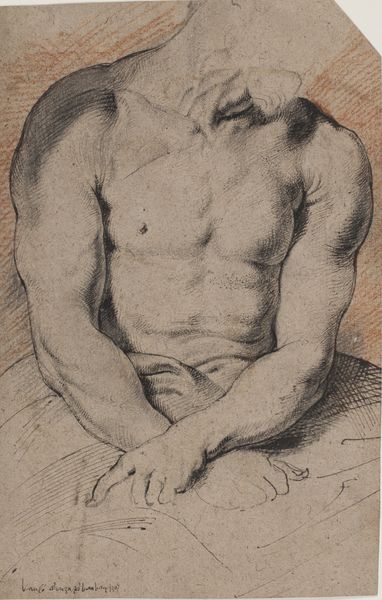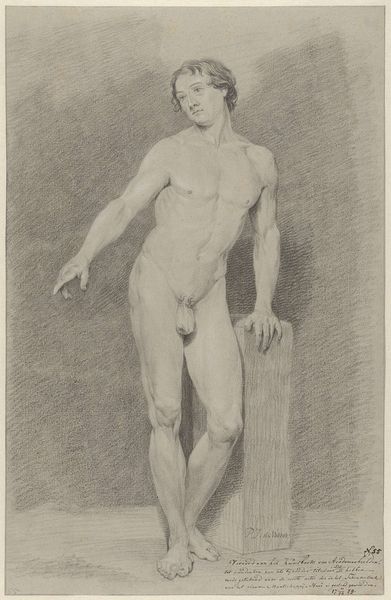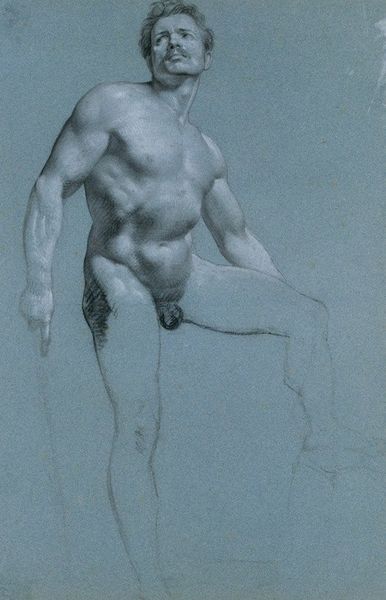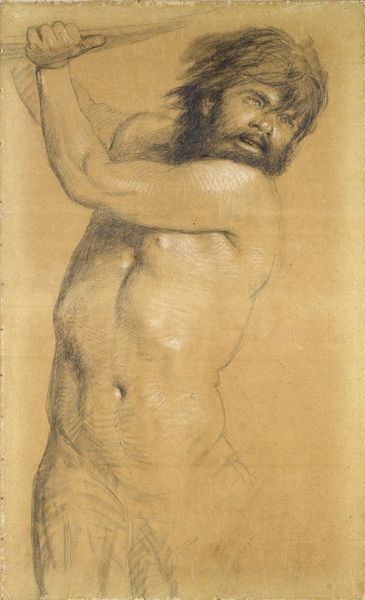
Zittend mannelijk naakt, naar rechts gedraaid, de linkervoet op een blok 1769
0:00
0:00
drawing, pencil, charcoal
#
drawing
#
neoclacissism
#
pencil sketch
#
charcoal drawing
#
figuration
#
form
#
pencil drawing
#
pencil
#
portrait drawing
#
charcoal
#
academic-art
#
nude
#
portrait art
Dimensions: height 471 mm, width 298 mm
Copyright: Rijks Museum: Open Domain
Curator: Let's take a look at this intriguing drawing from 1769, housed here at the Rijksmuseum. It’s entitled "Zittend mannelijk naakt, naar rechts gedraaid, de linkervoet op een blok," or "Seated Male Nude, Turned to the Right, Left Foot on a Block" by Jurriaan Andriessen. The piece employs both pencil and charcoal. What are your first impressions? Editor: The light is captivating. It gives the male figure a striking form. I notice the labor and preparation this type of anatomical study requires, both by the model and the artist. Curator: Indeed, the artist really showcases mastery of academic art styles. Andriessen was working in a neoclassical style, so the attention to the ideal form is not accidental. You can tell he spent hours studying the human form. I wonder, who would this be made for? Editor: Absolutely, there’s such skill here. Given the materials – pencil and charcoal – one could assume this drawing operated as a means to something greater. In that time, academies served a very strict social function, where studies of nude male bodies, created under academic principles, reinforced specific ideas. The pose and idealized form naturalize a certain vision of the body, right? Curator: Precisely. Academic artistic traditions always existed alongside social ideas and structures. Looking closely, there is the almost complete shading in the background, compared with the white highlights of the figure. Consider the position of the sitter, his internal focus. It begs the question of what a masculine pose is versus masculine vulnerability. This is where artistic conventions reinforce the status quo but also can open it to different readings, where identity is performative. Editor: And thinking materially, this sketch seems almost as if a preparatory diagram meant to support a larger cultural agenda. I'm thinking about how materials dictate method, which in turn dictates meaning. Was Andriessen actively aware of his hand in propagating this visual language? I wonder. Curator: These art academies perpetuated the existing hierarchical power dynamics of the time and, like today, were hopefully questioned. What remains potent about revisiting Andriessen’s figure now, I think, is confronting those past ideologies, while simultaneously challenging their contemporary reverberations. Editor: Looking at the scale and medium used, it feels good to see how close his practice allows one to understand the body and its means of production. Curator: Definitely a worthwhile process!
Comments
No comments
Be the first to comment and join the conversation on the ultimate creative platform.
